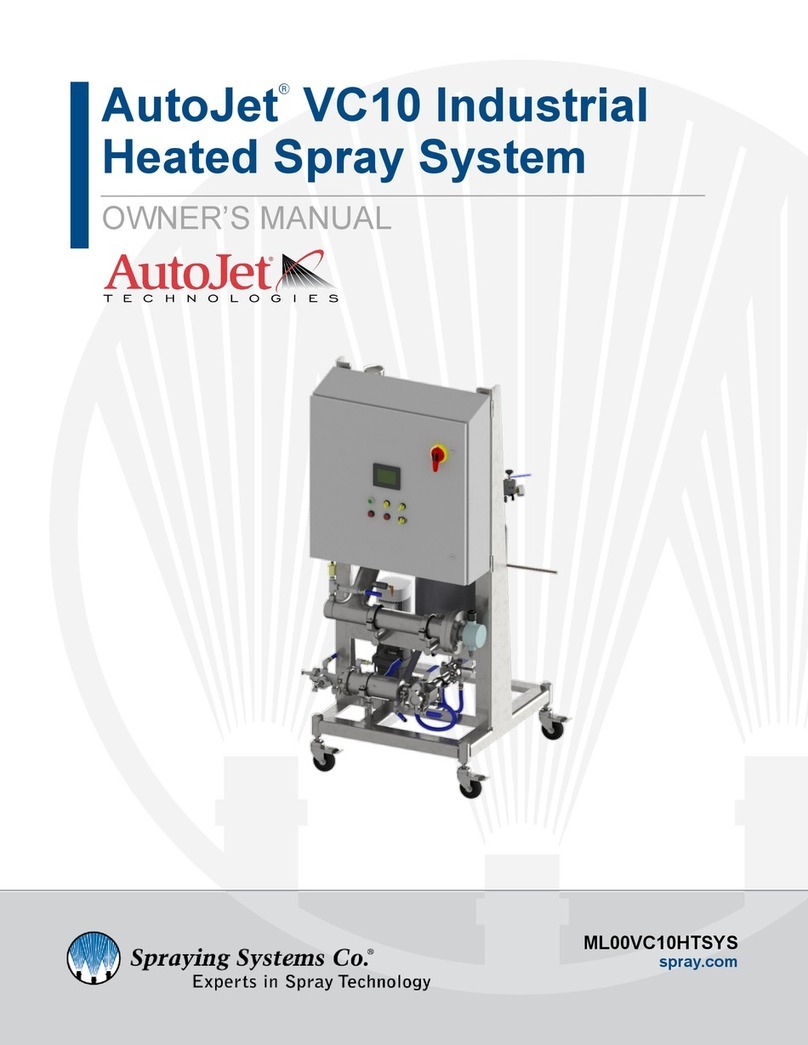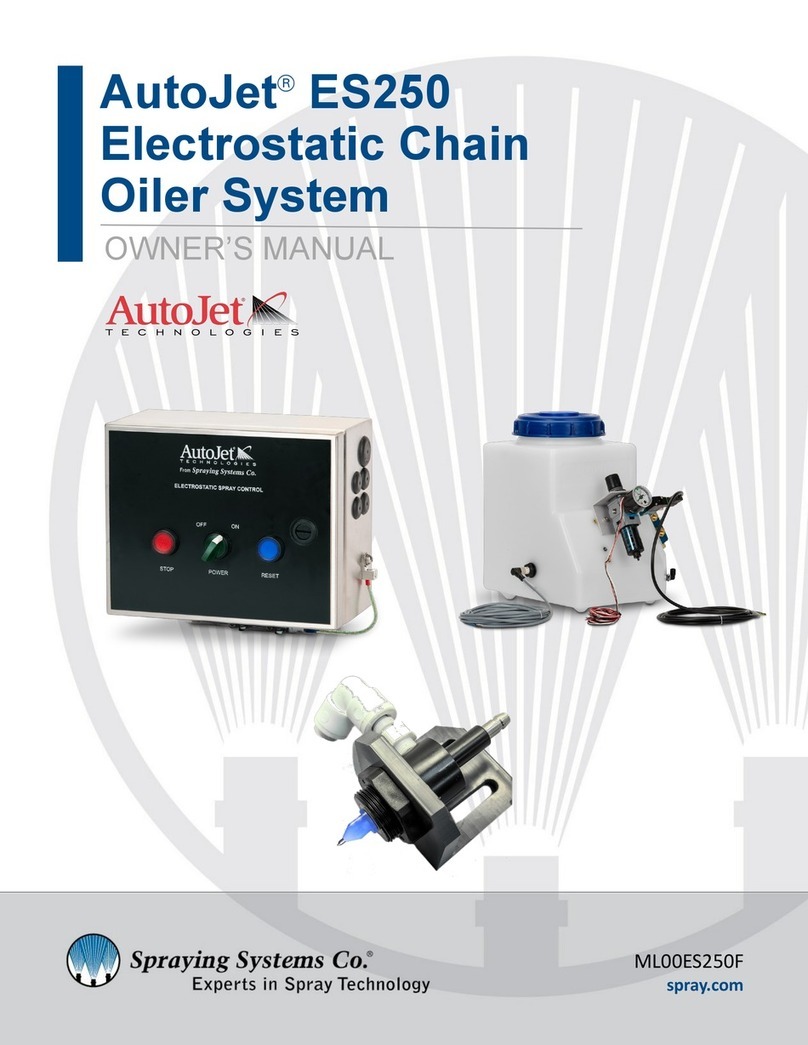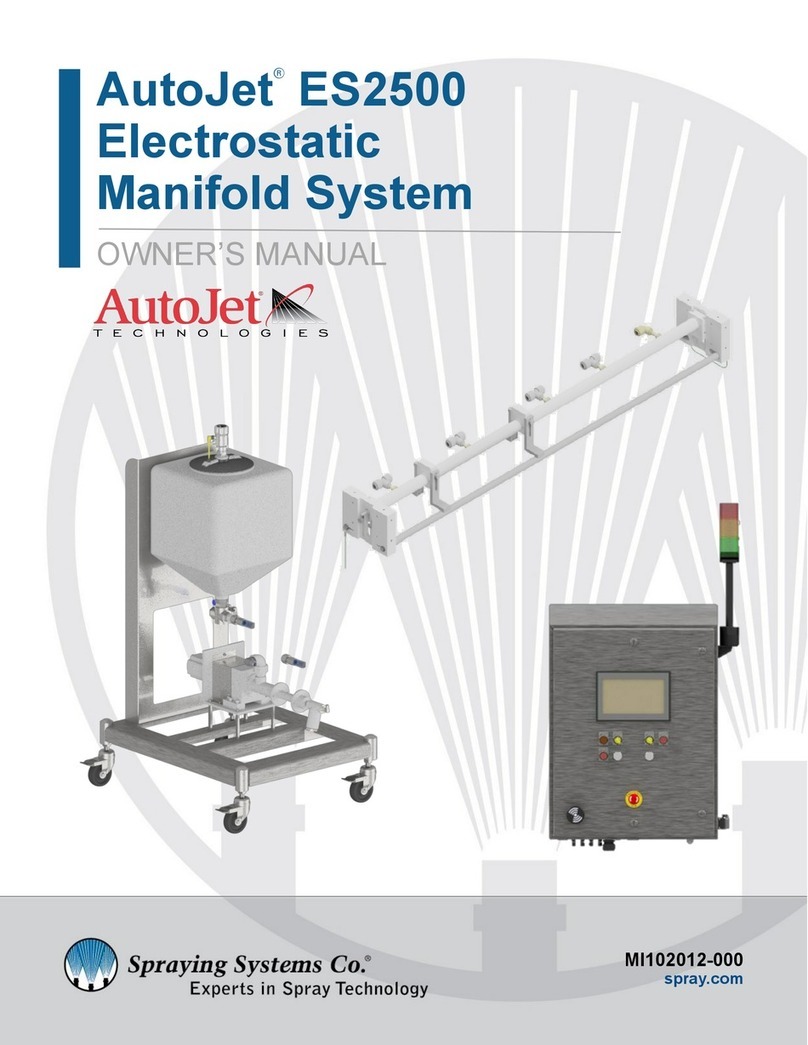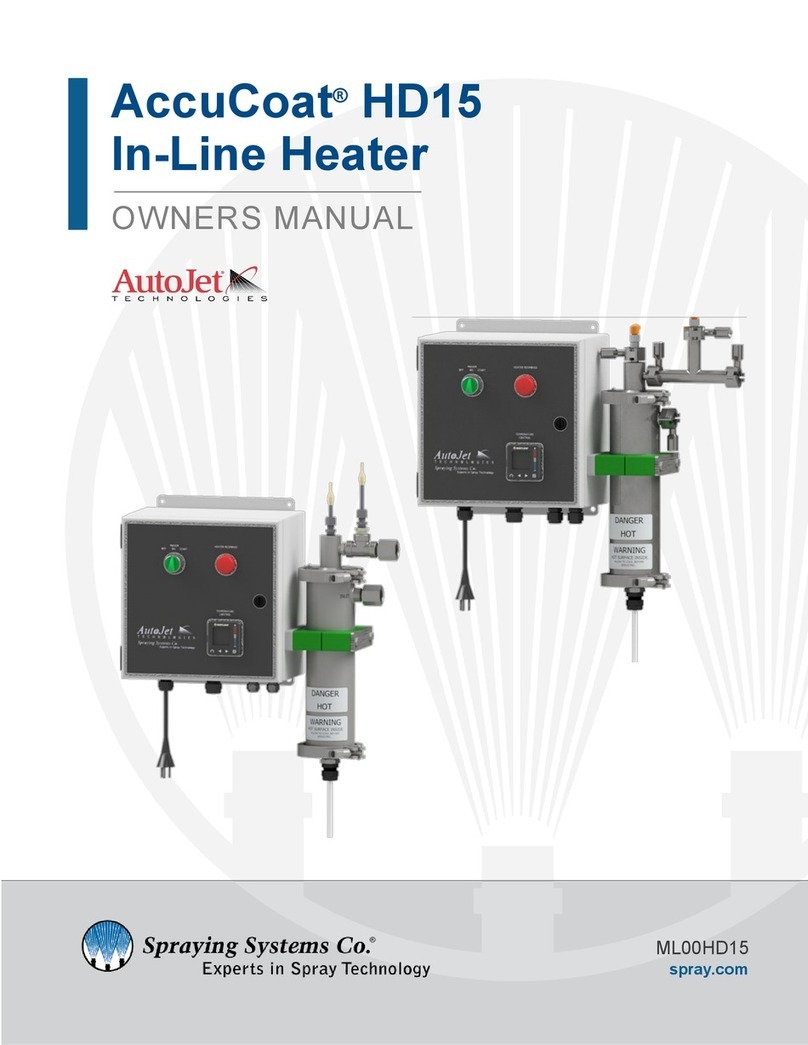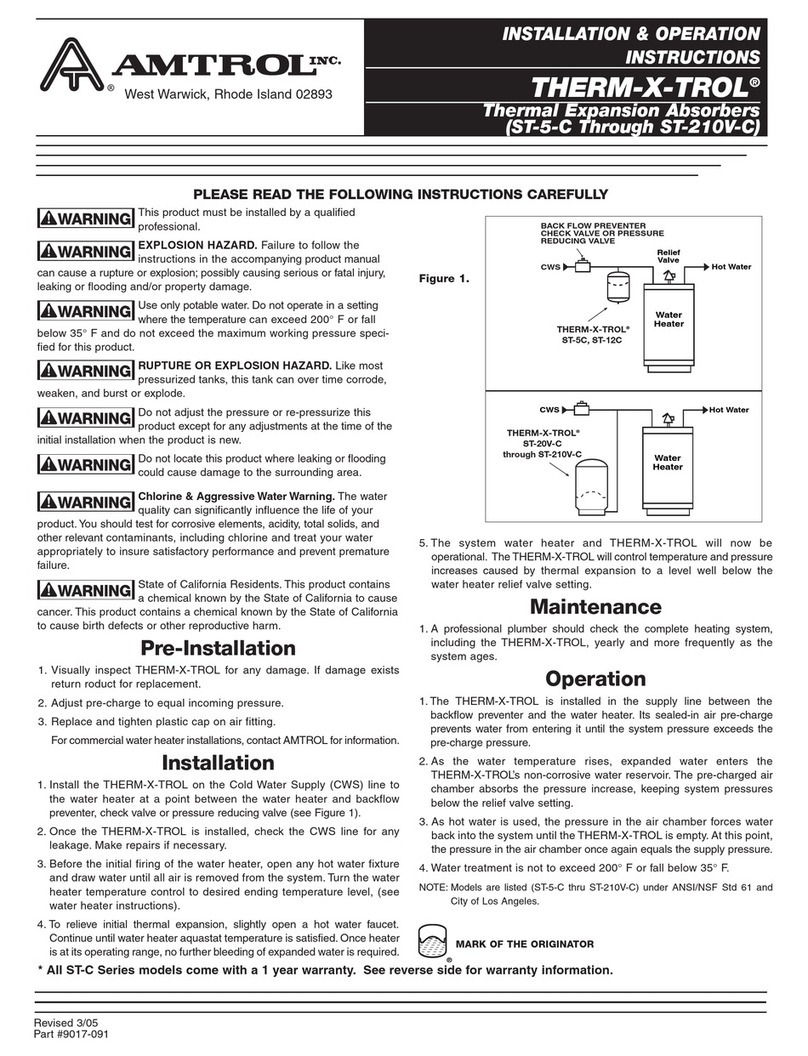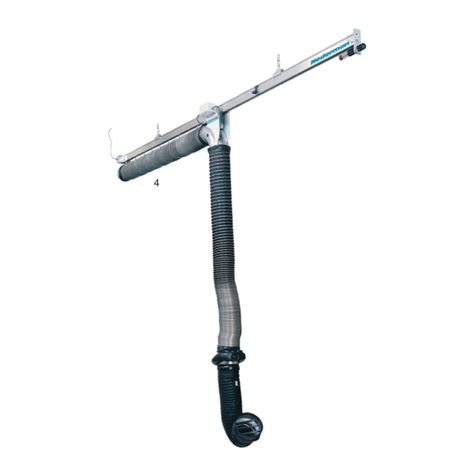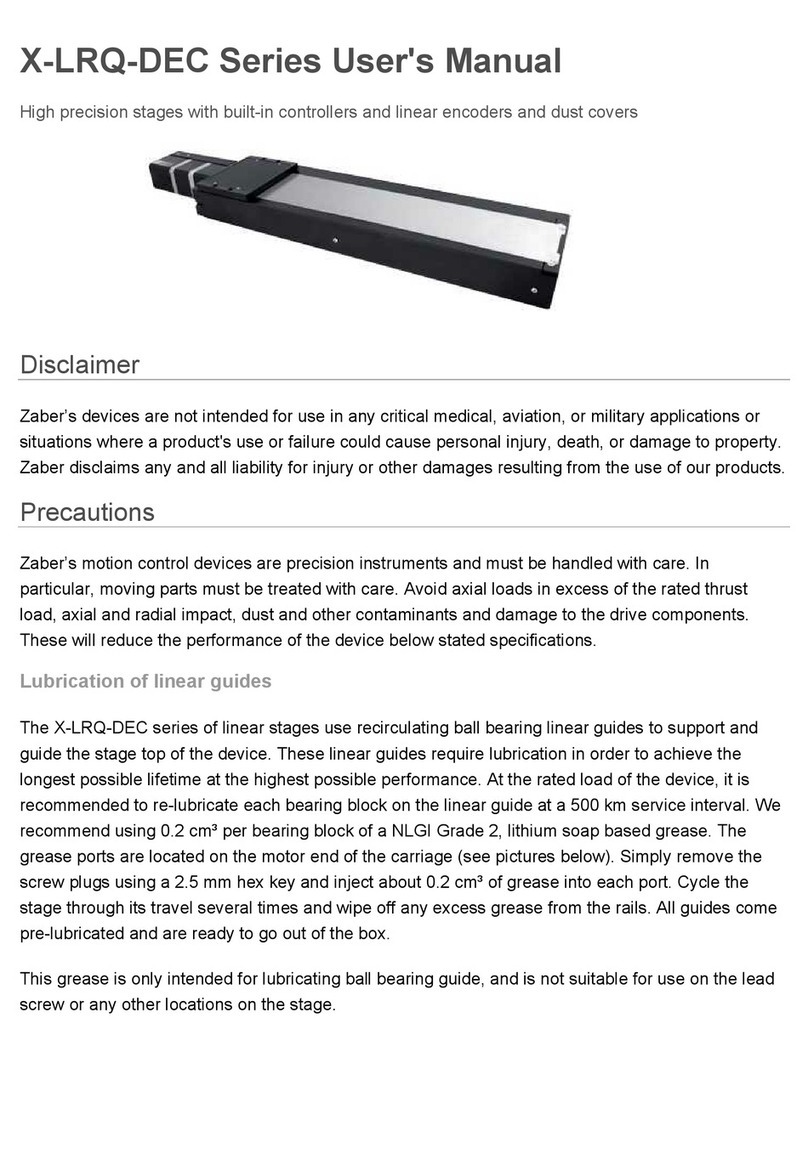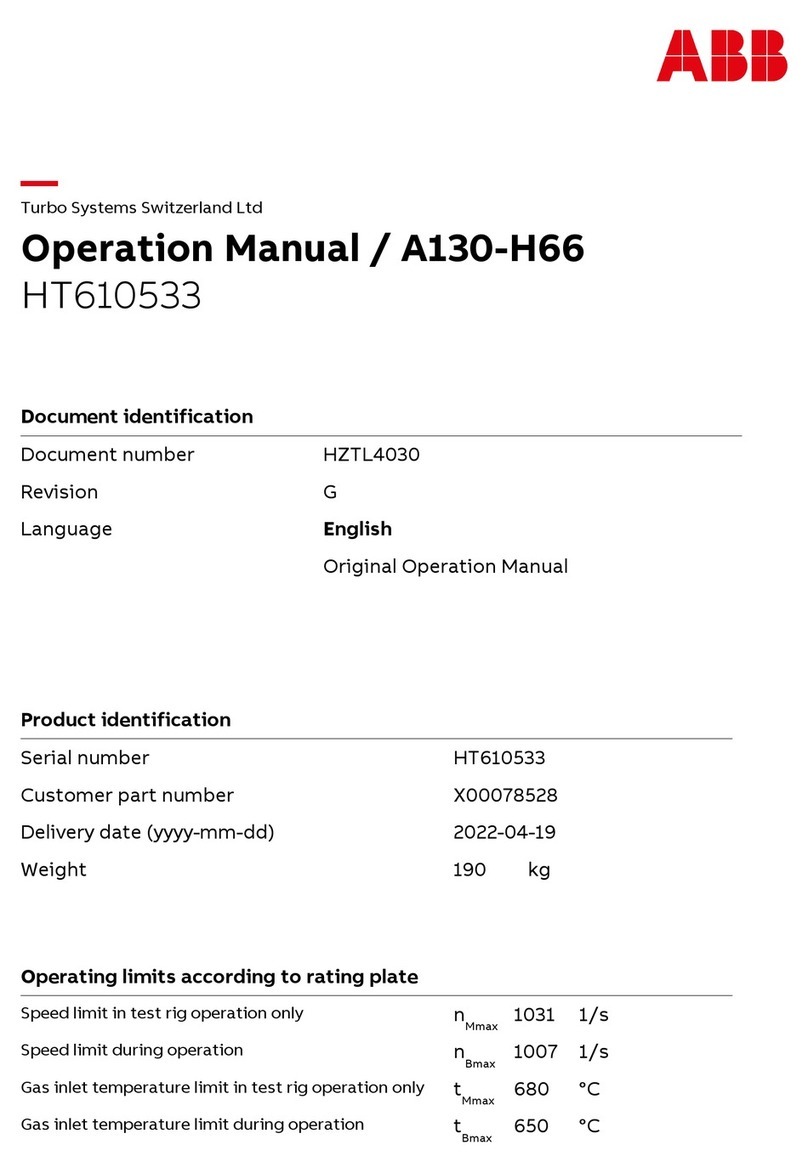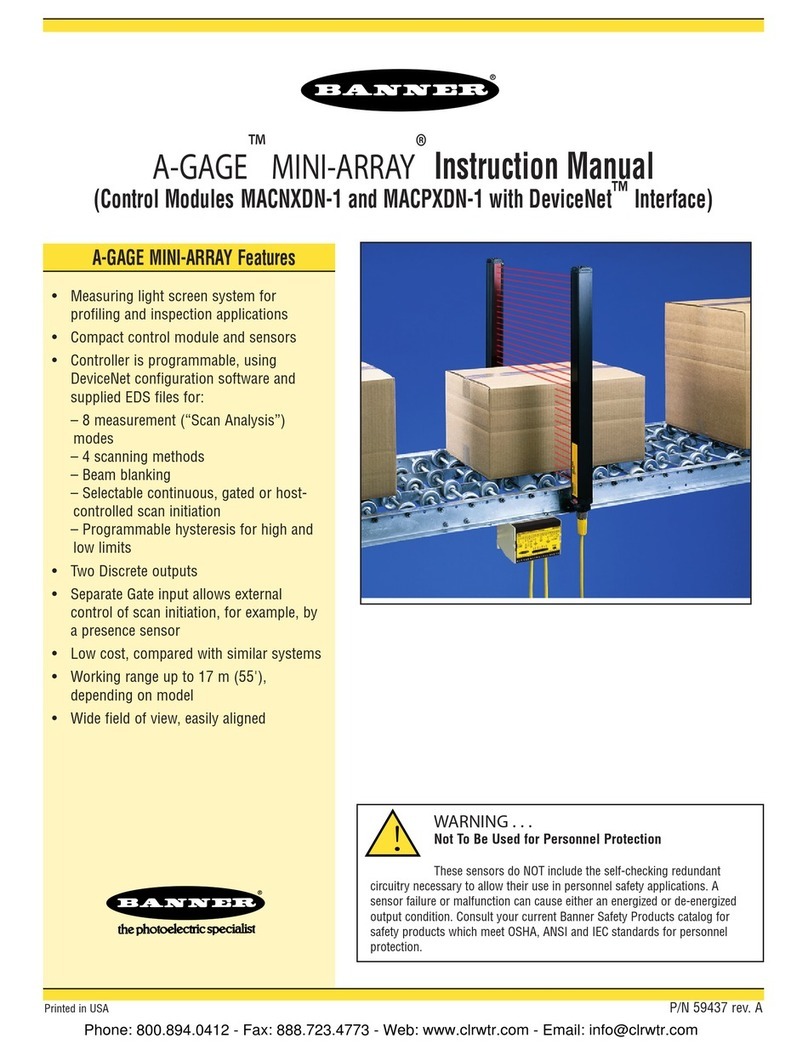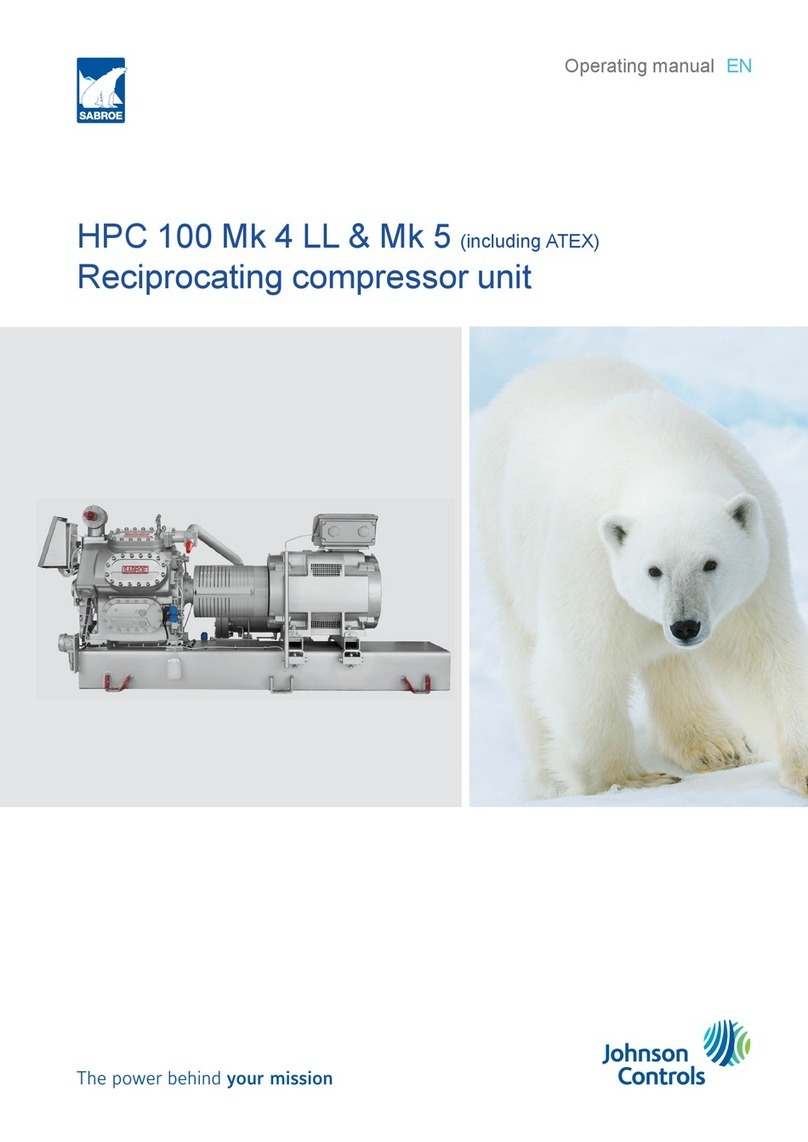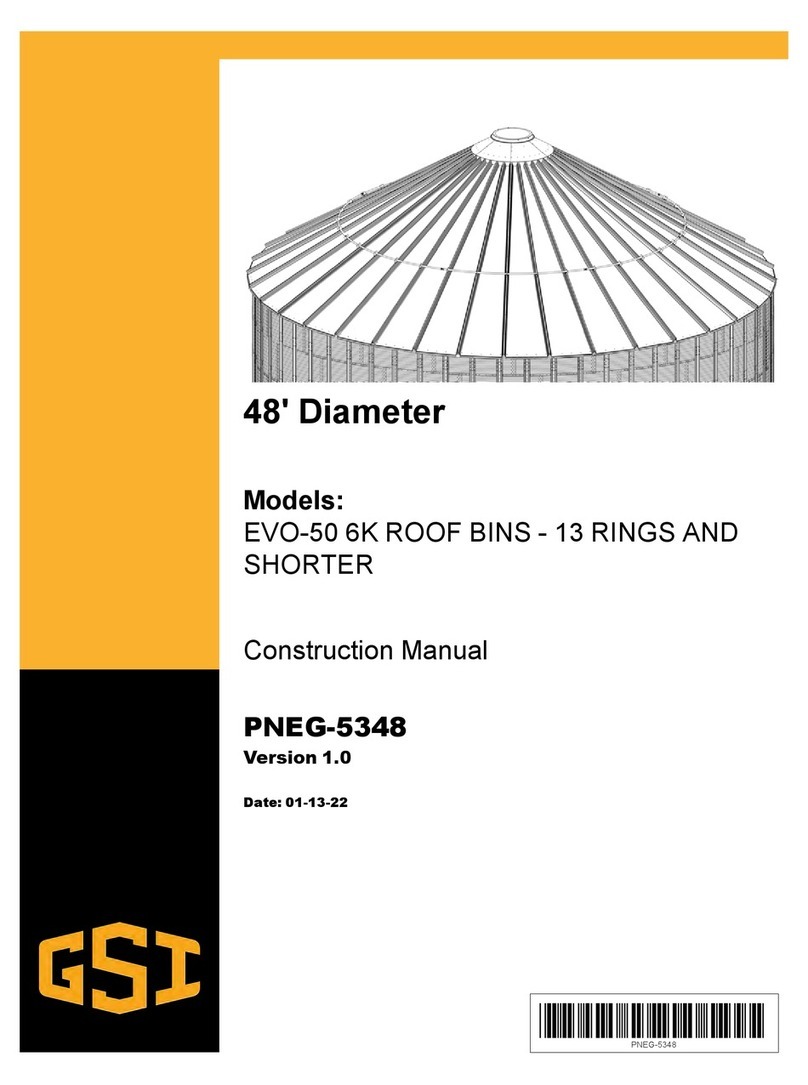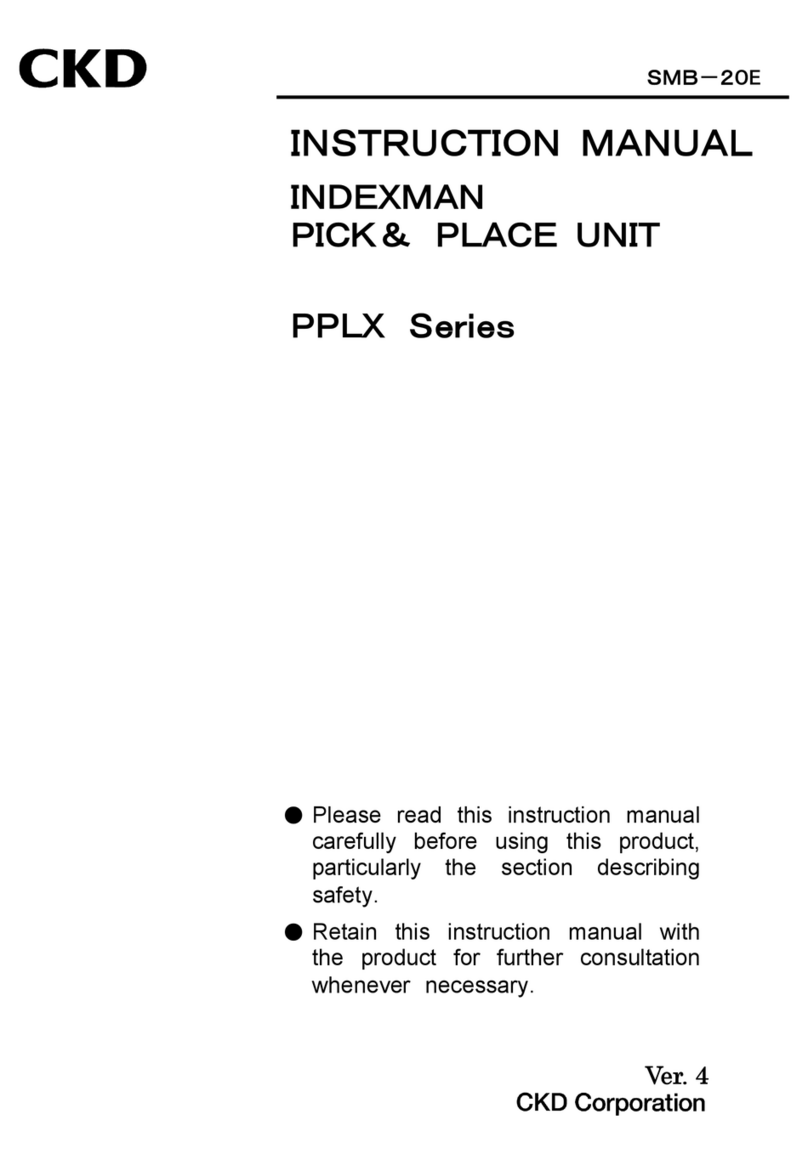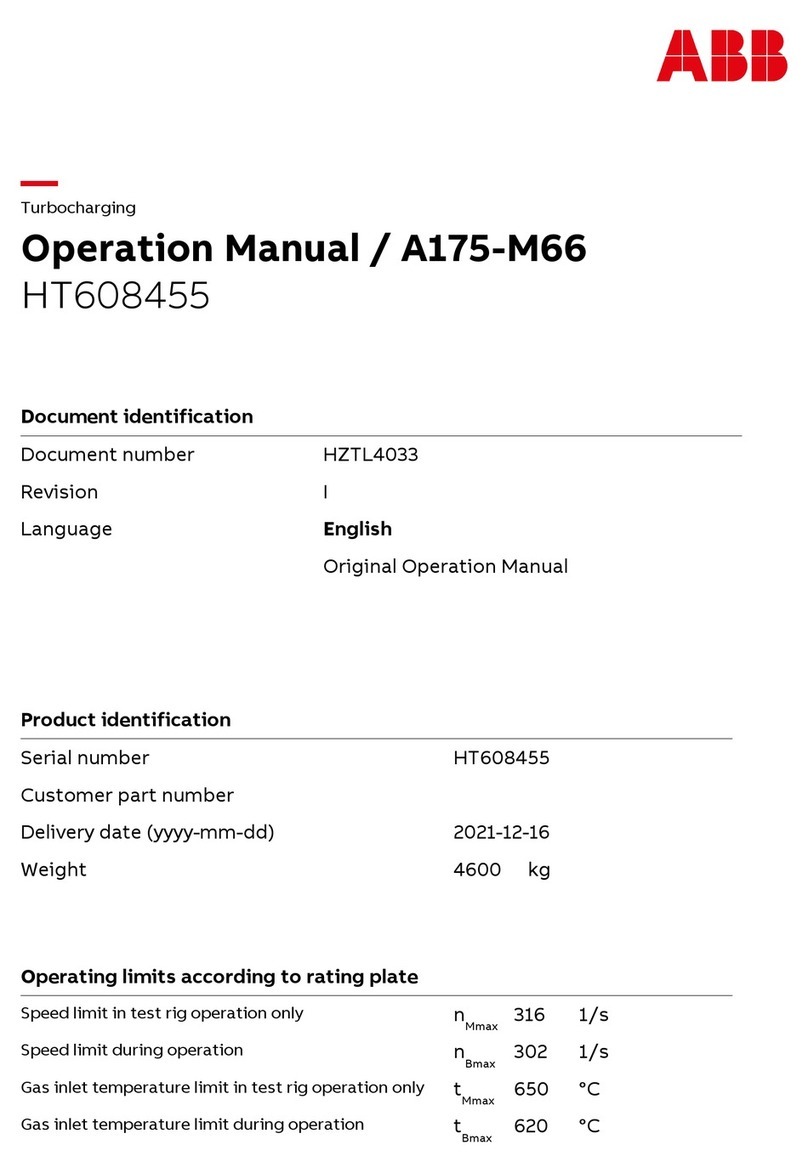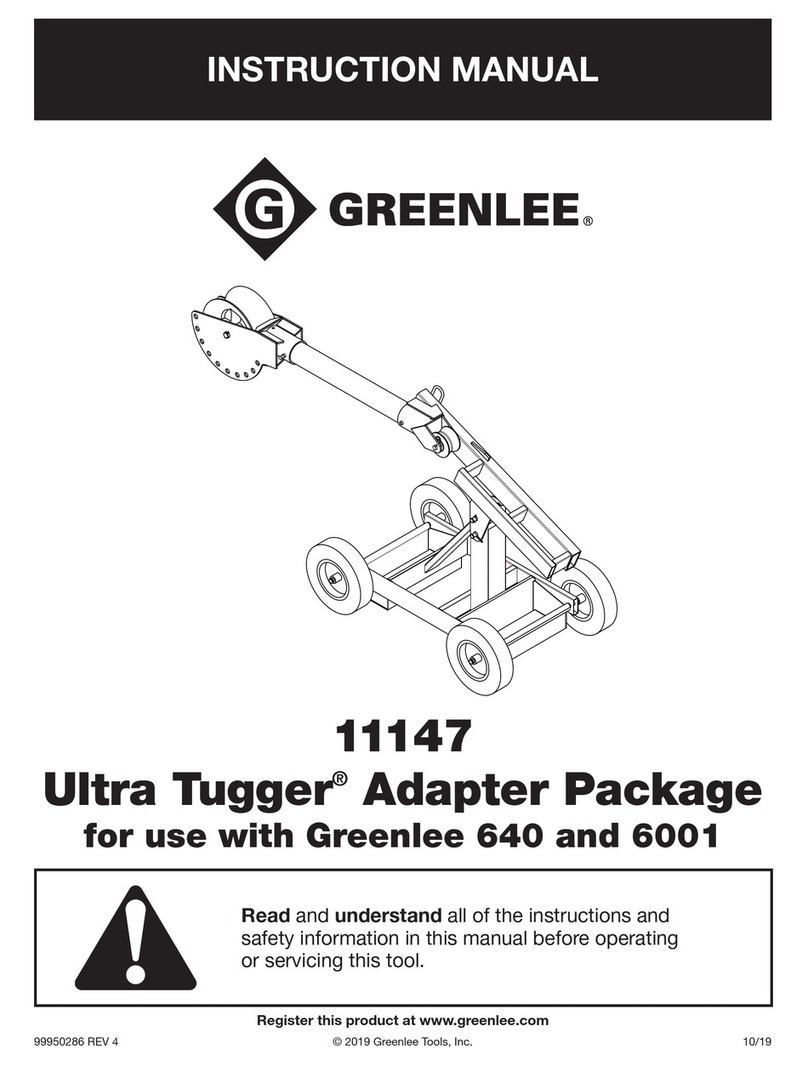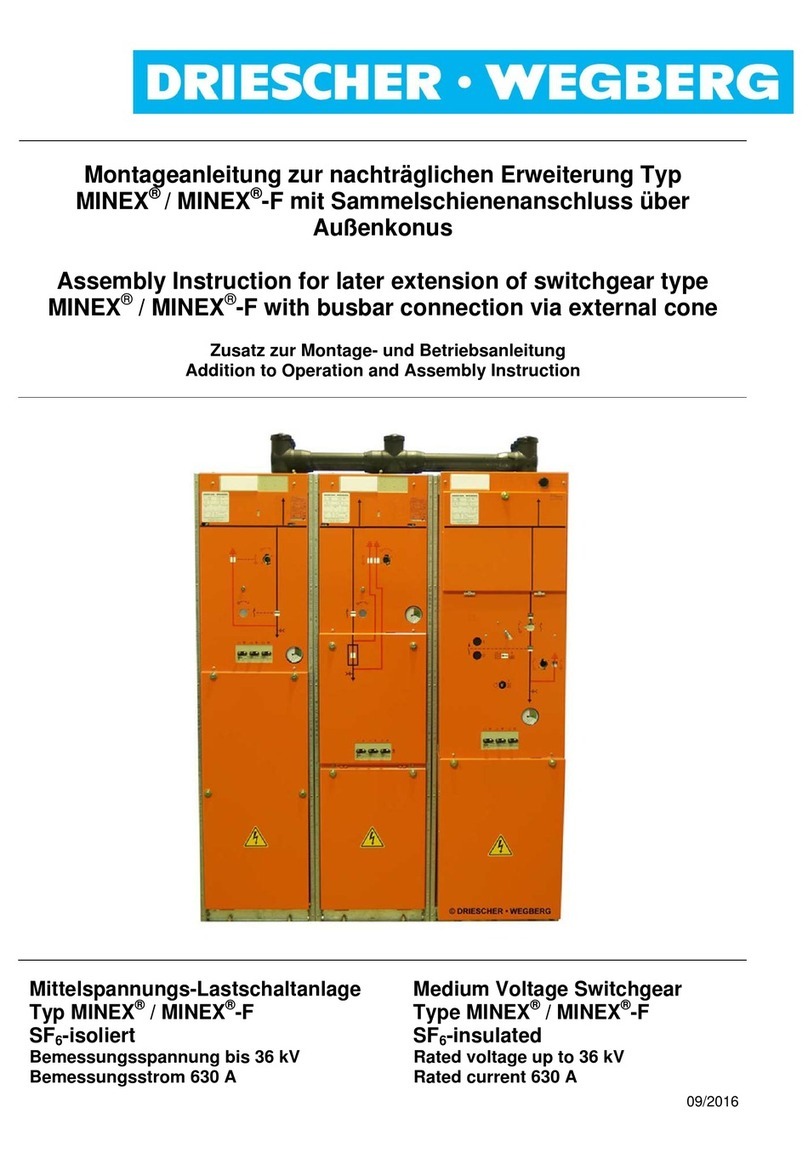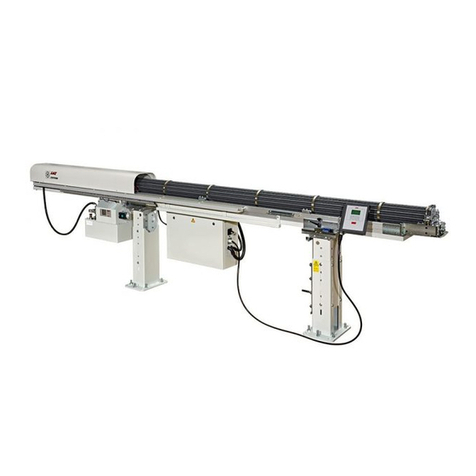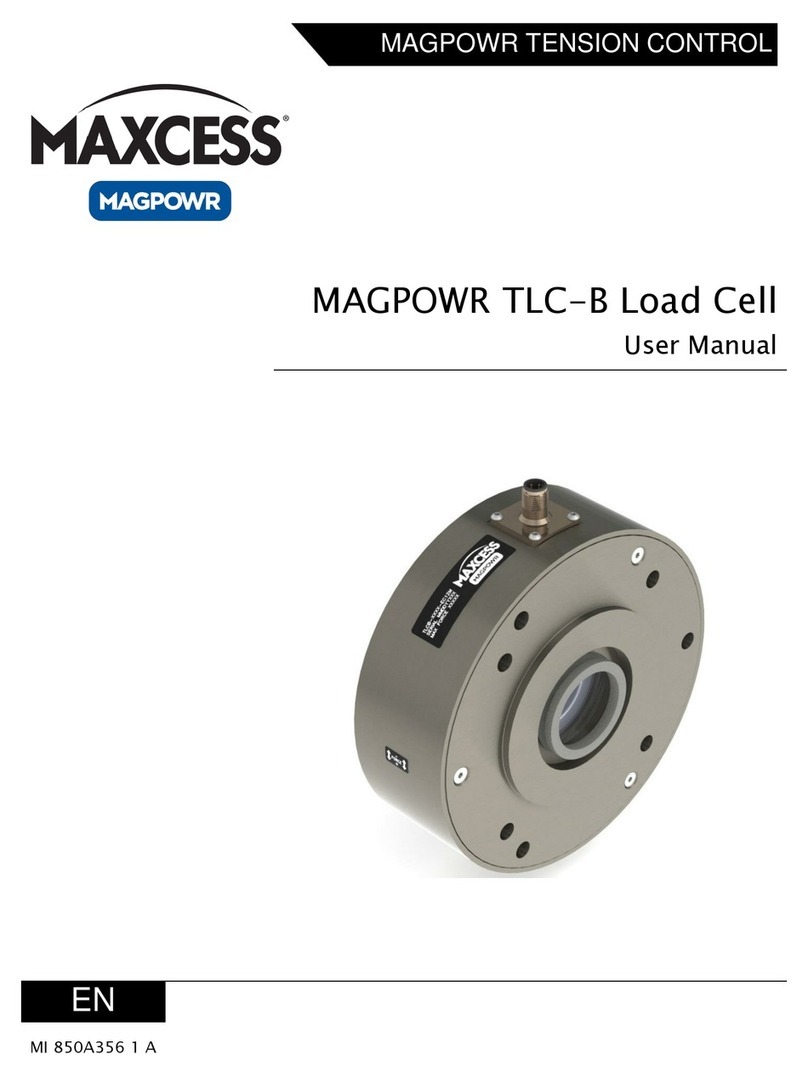Spraying Systems AutoJet AccuCoat MV10 User manual

1
ML00MV10HTSYS
spray.com
AccuCoat® MV10
Heated System
OWNER’S MANUAL

TABLE OF CONTENTS
1. Preface ·····································································································································3
1.1 Important ···································································································································· 3
1.2 How To Use This Manual············································································································· 3
2. Safety········································································································································3
2.1 General Safety Informaon·········································································································· 3
2.2 Unpacking The System·················································································································· 4
3. System Overview·······················································································································5
3.1 Product Feature···························································································································· 5
3.2 System Specicaons ··················································································································· 6
3.3 Oponal Add-Ons ························································································································· 7
3.4 Spray Control Panel Opons········································································································· 8
4. System Hook-Up·························································································································9
4.1 Connecons·································································································································· 9
4.2 Watlow Controller ······················································································································ 11
5. Operaon ································································································································12
5.1 System Start-Up·························································································································· 12
5.2 Filling the heang circuit ············································································································ 12
5.3 Programming The Level Sensor·································································································· 14
6. Troubleshoong And Faults······································································································15
7. Recommended Maintenance····································································································16
8. Spare Parts·······························································································································17

3
SECTION 1
PREFACE
1.1 IMPORTANT
The AccuCoat® VC10 Heated System and all components are produced, tested and checked at the factory. The system
can be dangerous if used incorrectly. Read this manual carefully and read any safety instrucons.
Operators must always follow the general safety instrucons in the working area and aim to prevent accidents.
The manufacturer reserves the right to make changes in standard construcon without prior nocaon.
Images and diagrams in this manual may not be exact representaons of your system conguraon.
1.2 HOW TO USE THIS MANUAL
This manual is intended to be a source of informaon for the operators and technicians who may be installing, inter-
acng with, or servicing/maintaining Spraying Systems Co.® systems and components.
This manual contains important safety warnings, installaon instrucons, operang instrucons, troubleshoong, and
maintenance informaon.
ICONS
WARNING: The user can be seriously injured, damage their health, and/or damage the system.
CAUTION: Product, process, or environment can be damaged or be in danger if the instrucons are
not followed correctly.
ATTENTION: Supplementary informaon for the user draws aenon to possible problems.
SECTION 2
SAFETY
2.1 GENERAL SAFETY INFORMATION
READ AND FOLLOW INSTRUCTIONS
All safety related and operang instrucons should be read before the system is operated. Follow all operang in-
strucons.
SERVICING
Do not aempt to service this system unless you have been trained or authorized to conduct repairs. Only authorized
and qualied service personnel should aempt to service this system. Service by unauthorized personnel will void any
warranes.
WARNING: Before performing any maintenance, make sure all components are completely cool,
electrical power is o, and any air/liquid pressure is bled from the system.
REPLACEMENT PARTS
This system has been designed with components that work together to provide the best system performance. When
replacement parts are required, only Spraying Systems Co.® recommended components should be used to maintain
proper system operaon, electrical, and pneumac safety. The use of any unauthorized replacement parts will void
any warranes.
UNINTENDED USE
Use of Spraying Systems Co.® equipment in ways other than those described in the documentaon supplied with
the equipment may result in injury to persons or damage to property. Examples of unintended use of equipment
would be:

4
• Using incompable materials/damaged parts
• Making unauthorized modicaons and using unapproved auxiliary equipment
• Removing or bypassing safety guards or interlocks
• Operang equipment in excess of maximum rangs
REGULATIONS AND APPROVALS
Make sure all equipment is rated and approved for the environment in which it is used. Any approvals obtained for
Spraying Systems Co.® equipment will be voided if instrucons for installaon, operaon, and service are not followed.
All phases of equipment installaon must comply with federal, state, and local codes.
PERSONAL PROTECTIVE EQUIPMENT
Spraying Systems Co. strongly recommends the use of appropriate safety equipment when working in potenally haz-
ardous environments and chemicals. This safety equipment includes, but is not limited to:
• Protecve hat, long sleeve shirt, long pants and safety glasses/face shield
• Chemical-resistant safety gloves and apron
Users of this product should never place themselves in the path of the resulng spray. Users should consult and follow
the recommendaons of the Safety Data Sheet (SDS) of any chemical or uid sprayed using this system.
PRESSURIZED SYSTEMS
It is important to recognize proper safety precauons when using a pressurized spray system. When dealing with pres-
sure applicaons, the system pressure should never exceed the lowest rated component. Always know your system
and all component capabilies, maximum pressures, and ow rates.
WARNING: Fluids under pressure can penetrate skin and cause severe injury.
ATTENTION: Always remember to carefully read the chemical manufacturer's labels, follow SDS, and
all direcons.
WARNING OF SHOCK HAZARD
To reduce the risk of electric shock, do not open the cover on electrical control panel. For service contact
Spraying Systems Co.® at 1-866-321-2250.
WARNING: Plug panels into a GFCI outlet.
WARNING: To prevent injury, avoid contact with potenally hot parts. Components can cause severe
burns. Do not aim the spray at any person or part of the body. Do not place any part of your body in
the spray paern.
CHEMICAL COMPONENTS
The use of any chemicals requires careful control of all worker safety.
Spraying Systems Co.® does not manufacture or supply any of the chemical components used in this equipment and is
not responsible for their eects. Because of the large number of chemicals that could be used and their dierent
chemical reacons, the buyer and user of this equipment should determine compability of the materials used and
any of the potenal hazards involved.
2.2 UNPACKING THE SYSTEM
The system components come carefully packaged to protect them from damage. Use cauon when opening the crate.
The crate will contain all parts needed to install the unit. Parts of the unit may be wrapped in bubble wrap. Remove all
of the packaging material wrapping the system. Once unpacked and removed the from the crate, the system is ready
for installaon and connecon.
CAUTION: The packaging may contain exposed cables, hoses, or other components. Always exercise
cauon when opening boxes to avoid accidental damage or slicing of various components.

5
SECTION 3
SYSTEM OVERVIEW
3.1 PRODUCT FEATURES
The Spraying Systems Co.® AccuCoat® MV10 Heated Spray System is a system that can be used in a variety of viscous
heated applicaons when temperature and pressure control is needed. System consists of a control panel mounted to
an oponal frame and the opon of Spraying Systems Co. spray control panels for spray control and operaon. Power
is distributed to the pump and heater from the system control panel.
The operator controls mounted on the control panel consist of the power buons, and various illuminated selector
switches. A lockout/disconnect switch is mounted on the door. An illuminated “Power On” pushbuon and a “Power
O” pushbuon are located on the door. A low level indicator is illuminated when the tank is low. Illuminated selector
switches for “Pump On”, “Heater On”, and “Auto-Rell On” (oponal) are used to acvate said features; lamps will be
lit when features are running. The heater can be turned on only when the circulaon pump is running.
Funcons:
A circulang condioning line provides heated uid to all the jacketed components of the system. This line consists of
a centrifugal pump, immersion heater, thermometer, pressure gauge, and return reservoir.
The centrifugal pump circulates the heated uid throughout all the jacketed components.
A regulator allows for the system to be lled with a pressurized source of water or glycol soluon. DI water is recom-
mended to limit mineral deposits. The regulator limits the pressure of the system for safe operaon.
An immersion heater maintains the temperature set point of the heated uid and, by extension, the process uid. A
pressure gauge high limit switch turns the heater o at 650°F for fail safe protecon. A 50/50 mixture of propylene (or
ethylene) glycol and water must be used for temperatures of 180°F-200°F.
A temperature controller thermometer provides temperature regulaon to the in-line immersion heater. Tempera-
ture feedback is provided by the thermometer in the tank for reference.
A level switch veries that enough uid is in the system so that components are not damaged. Finally a return reser-
voir provides room for expansion of the heated uid, and pressure relief for over lling of the system.
Note: All the condioning lines from the pump, through all jacketed components, and back to the return reservoir
must be run in series. Never split the ow path as this could result in cold spots.
Fluid delivery is accomplished via jacketed pressure tanks, valves, hoses, and spray nozzle(s). The tank is a pressure
vessel that is pressurized with air to maintain a given setpoint at the nozzle locaon. To ensure constant heang the
liquid delivery components are jacketed including the ball valves mounted on the tanks. A hose delivering the uid
from the tank to the nozzles is completely jacketed. Finally the nozzles themselves are jacketed to maintain set tem-
peratures. The tank is an ASME pressure vessel. The tank comes equipped with 125psi safety valve, air regulator, and
ball valves. The main air supply goes into the inlet 2-way shut o valve. The air inlet pressurizes the tank to maintain
pressure setpoint at the nozzles. Before opening the pressure tank, make sure the pressure in the system is relieved.

6
3.2 SYSTEM SPECIFICATIONS
The AccuCoat® MV10 Heated Spray System is powered by 230 VAC 1 ø. The main air supply is connected to the sys-
tem via 1/4” NPT (F) located on the tank.
Panel Power: 230VAC +/-15% 1 ø, 60Hz, 25A max (Plug in a grounded GFCI outlet)
Air Input:
• Pressure: 80 psi (min), 115 psi (max)
• Inlet Port: Tank: 1/4” NPT (F)
• Consumpon: Main System: 5 SCFM maximum
Environmental
• Operang temperature range: 32°F to 109°F (0°C to 42.8°C)
• Humidity Range: 5 to 95% (non-condensing)
• Enclosures: NEMA 4
• Weight: Control Panel/tank skid - 360lb (empty)
• Dimensions: 58” H x 45” L x 35” D
Level Switches
• TDR (Time Domain Reectometry) Level Sensor
• -4°F to 302°F (-20°C to 150°C), 232 psi max. (16 bar), 24 V DC
• High Frequency Capacive Level Switch (stand pipe)
• 185°F max. (85°C) connuous, 302°F short me (150°C)
Pressure Tank
• 10 gal, Jacketed, Insulated
• 304 SS construcon Electropolished
• 40psi max jacket
• 100psi max tank
• 300°F max
Centrifugal Pump
• 1/3 hp 230VAC 1 ø
Immersion Heater
• 304 SS screw plug, Stainless steel heang element, safety shut o
• 70°F - 200°F ( 21°C - 93°C) range, 3KW, 230VAC 1 ø

7
3.3 OPTIONAL ADD-ONS
These add-on systems are for any liquid delivery supply units.
— AUTO-REFILL
Auto-Rell is an oponal module that helps rell the supply tank during operaon. The auto rell system can be add-
ed to the Coang Supply Unit and requires a level sensor connecon to aach to the control panel. The level sensor
displays the current tank level as a percent to full. The rell setpoint can be adjusted for user preference. For more
informaon see Auto-Rell/Level Sensor secon.
— TRANSFER PUMP
Easily transfer low to medium viscosity liquids out of drums and totes. air driven, 2:1 rao piston pump, with air regu-
lator.
Level Sensor for
Auto Rell

8
3.4 SPRAY CONTROL PANEL OPTIONS
Spray control modules pair with the oponal variable spray mount and provides the means to set operang parame-
ters and control the funconing of the automac spray nozzles. AutoJet® oers three updated panel models to
choose from. The controllers are designed to run electric actuated spray nozzles.
Controllers not included with this system package. These controllers are suggested.
*Dual Channel 1000+ is only capable with electric actuated spray nozzles and air nozzles can only work
with a single channel.
Features AutoJet 1000+ AutoJet 1750+ AutoJet 2150+
HMI Touch Screen 4.3” 4.3” 7”
Power Input 110-240 VAC,
50/60, 1Ph., 3A
110-240 VAC,
50/60 1 ph., 5A
120 VAC, 50/60,
1Ph., 8A
Washdown Closure ✓✓✓
Recipes ✓✓✓
Trigger Input ✓✓✓
Global Compability, mul-
voltage power cords available
✓✓✓
Stainless Steel Control Panel ✓✓✓
Power On/O Switch ✓✓✓
Level Switch ✓✓✓
Pulse Width Modulaon (PWM) ×✓✓
System Outputs ×✓✓
Dual Channel* ✓×✓
HMI Wi-Fi Access ×✓✓
2300 Series Controls ×✓✓
Precision Spray Control ×✓✓
Encoder Input ××✓
Flow Monitoring ××✓
Pressure Input Sensor ××✓
Ethernet IP ××✓
High Capacity ××✓

9
Your system is a self-contained heang system that requires power for the main panel. This system must be pared
with a control panel dedicated to the nozzle on/o control.
4.1 CONNECTIONS
Connect all process lines and blue condioning lines to the tanks, pumps and nozzles. Please note the nozzle is sym-
metrical, and inlet/outlet water lines can be reversed. Your nozzle(s) are electrically actuated, and strictly hydraulic in
nature. Connect the cable for each nozzle, and wire in appropriately. See the manual for the appropriate Spraying Sys-
tems control panel schemacs and reference drawings. Main air is congured to supply the panel and remote compo-
nents with a single connecon.
Note: All condioning line hoses should be connected in series, and never in parallel.
Hoses on the main frame assembly goes from the condioning uid to the pump outlet and to the jacketed nozzle(s),
returning through the jacketed hose to the components at the base of the tank, then exit at the top of the tank and
returns to the standpipe. This allows for air relief of the condioning circuit at that connecon. When inially lling
the heang circuit, DI water is suggested at temperatures below 180°F (potable water could be used). For tempera-
tures 180°F-200°F, the system requires a glycol soluon, typically 50/50. All air vents should be turned to the open
posion indicated. They are automac and will close when the air has fully escaped. Once all air bubbles have been
relieved, hand-ghten the 1/2G sensor being careful not to over ghten. An air pocket could inially reside in the level
switch on the stand pipe that can be relieved by loosening the 1/2G sensor connecon recognizable by an O-ring.
CAUTION: The AccuCoat® MV10 Heated Spray System is powered by wiring into 230VAC 1 ø service. Do not
connect power unl all wiring, and hookup of the system is complete.
WARNING: The air supplied to the machine must be clean, free of moisture and lubricang uids; failure to do
this voids all warranes.
SECTION 4
SYSTEM HOOK-UP

10

11
4.2 WATLOW CONTROLLER
FRONT PANEL CONTROLS AND INDICATORS
• Power on pushbuon, illuminated – when momentarily pressed, applies power to the AccuCoat® MV10 Heated
Spray System.
• Power on indicator- when indicator is on, indicates power is applied to the system.
• Power o pushbuon - when momentarily pressed, turns o power to the AccuCoat MV10 Heated Spray System.
• Disconnect - use to disconnect power from the panel and components.
• Pump selector switch, illuminated – when selector switch is on, pump is enabled.
• Pump on indicator- when indicator is on, pump is on.
• Heater selector switch, illuminated – when selector switch is on, heater is enabled (pump must be turned on).
• Heater on indicator- when indicator is on, heater is on.
• Auto-Rell selector switch, illuminated – when selector switch is on, Auto-Rell is enabled.
• Auto-Rell on indicator- when indicator is on, Auto-Rell is lling the tank.
• Low Level indicator- when indicator is on, indicates the level in the tank is below the low level setpoint.
• Heater controller- use to program the heat controller and input the heater set points.
Reference the component manual for further operang instrucons.
OPERATING PROCEDURES:
1. Disconnect turned on
2. Operator powers system on
3. Operator opens air vents on the heang loop
4. Operator lls system with condioning uid (water)
5. Operator turns pump on and purges air in line
6. Observe the condioning uid pressure (20-30psi)
7. Operator sets water temperature with arrows on the heat controller
8. Turn on heater and observe temperature and adjust to desired temperature if needed
9. Turn o heater/pump
10. Aer use disconnect air and drain tank if needed.
Actual condioning uid temperature
Condioning uid temperature "Set point"
Push to increase the set point
Push to decrease the set point
EZ - Heater fault "Reset"

12
SECTION 5
OPERATION
5.1 SYSTEM START-UP
ATTENTION: Before starng the system for the rst me, be sure to follow all instrucons on the drawings
and in the “System Hook Up” Secon of this manual. Always check all electrical, hydraulic, and pneumac
connecons before powering on the system or turning on air and water supply.
WARNING: The heang circuit and all uid delivery lines should be ushed prior to connecng to
nozzles and running the system.
5.2 FILLING THE HEATING CIRCUIT
1. Begin by turning the disconnect switch to the “On” posion.
2. Apply power to the system using the “Power On” pushbuon. The Amber indicator will light up.
3. Prior to the system being run for the rst me, the heang circuit must be lled with condioning uid. DI water is
acceptable for temperatures of 180°F and below. For temperatures of 180°F -200°F, a 50/50 mixture of propylene
(or ethylene) glycol to DI water must be used.
4. Connect the condioning uid source to the ¼” NPT (F) valve at the top of the standpipe.
5. To ll the reservoir, open the valve and adjust the regulator. The regulator should be set to 5psi. The over-
pressurizaon valve past the regulator will open at 10psi.
6. Open the air purge vents on the return line and pump; these will automacally purge air out of the water line.
7. As condioning uid lls the reservoir, loosen the 1/2G level sensor connecon recognizable by an O-ring (boom
connecon on the stand pipe).
8. Allow the uid and air mixture to escape from the loosened connecon unl no air bubbles are seen; hand-ghten
the sensor to begin building pressure.
9. Once the small, yellow light on the sensor is lit, allow the system to connue to ll for several minutes. Wait unl
the inlet regulator at the top of the standpipe levels o at a pressure, making sure it is adjusted to 5psi at a no-ow
condion.
10. Turn the pump on by using the selector switch on the system control panel. If the standpipe uid level drops below
the level sensor, the pump will automacally be turned o and the Pump On light will be o.
11. As the system connues to ll, the pump should resume operaon. When the pump is running, water pressure at
the outlet of the pump should be approximately between 20-35psi.
12. During the ll operaon if the water pressure does not exceed about 20psi, make sure all the air vents are open.
Once all air is purged out of the system, the pressure at the pump outlet should remain steady.
If pressure surges on the regulator of the return reservoir, or a large amount of water is relieved out the over ow
check valve aer shung the pump o, then air may sll present in the system.
13. Repeat the purge process described above, and potenally try the following:
14. Find the condioning lines highest point and loosen the ng unl liquid is consistently leaking.
15. Then ghten the ng. Loosen the point level sensor on the heated system return tube to release any air trapped.
16. Reghten the sensor when complete.
17. Excess uid in the system will be relieved when the system is heated to your highest operang temperature.
Note: Less than 10psi could indicate air in the system, or low uid level.
WARNING: Relieving air from the condioning line should never be done when the system is hot; when reliev-
ing, uid can be dispensed onto surrounding objects and people.

13
Filling and Emptying the Tank
To ll the tank, simply depressurize the tank, open the tank lid and ll to desired level. Make sure uid source is +/-
15°F of the process temperature.
To empty the tank, either open the 3-way valve at the tank outlet to the draining port or use the spray controller to
ush the tank contents through the spray nozzles or header.
Heang the System
Set temperature on the heater via the heat controller on the front panel. Once the system is lled and the condion-
ing uid is circulang properly, turn on the heater. Wait unl the system reaches the desired setpoint. At this point
the uid has expanded to its full capacity, and any excess will escape the relief port on the return reservoir.
System Operaon
To operate system, follow all startup procedures above. Set the tank pressure to the desired setpoint using the man-
ual pressure regulator on the tank. Make sure 2-way ball valve is open. Set the Atomizing Air pressure to the desired
pressure using the regulator on the Air Control Panel. System is now ready to spray.

14
5.3 PROGRAMMING THE LEVEL SENSOR
The auto rell system can be added to the Coang Supply Units and requires a level sensor connecon to aach to
the control panel. The level sensor displays the current tank level as a percent to full. The rell setpoint can be adjust-
ed for user preference.
The tank level sensor comes pre-programmed. However, the set points (Q1 – SP1 and Q1 – RP1) can be adjusted to
congure the system specically for the applicaon.
The level sensor displays the tank level as a percent (%) full. However, all parameters are measured in millimeters
(mm) from the boom of the probe. The usable range of the level sensor is between 10 mm and 410 mm from the
boom of the probe, a 400 mm range.
There are two switching outputs that can be adjusted: Q1 and Q2. Output Q1 is used for the Auto-Rell feature and
output Q2 is used for the Low Tank Level indicator.
To access the above parameters from the main display (% full), press and hold the “Set” buon. Use the up and down
arrows to navigate to “Q1MENU” or “Q2MENU” and press the “Set” buon. Use the up and down arrows to navigate
to “SP1” or “RP1” (or “SP2” and “RP2”) and press the “Set” buon.
Use the up and down arrows and the “Set” buon to change the numeric values assigned to the given parameter.
Instrucons for seng other parameters can be found on pages 32-35 of the provided component manual.
Assuming the tank has been inially lled and given the values in the above table, as the system is being used the
level in the tank will decrease. Once the uid reaches 250 mm from the boom of the probe, 63% full (100% * (250-
10)/380=63%), Auto-Rell will turn on. As the uid level rises and reaches 390 mm from the boom of the probe,
100% full, Auto-Rell will be turned o.
If Auto-Rell is switched o or the supply is interrupted, and the uid level reaches 10 mm from the boom of the
probe, 0% full, the Low Tank Level indicator will turn on. This is intended as a warning that the system is not auto-
macally relling. The Low Tank Level indicator will turn o once the uid level rises above 50 mm from the boom
of the probe, 10% full.
Menu Parameter Name Descripon Preset
Expert Probe Probe Length Length of probe for this applicaon 457 mm
Qa QAHIGH High Level 20ma Maximum tank level (QAHIGH>QALOW) 380 mm
AutCal
Qa QALOW Low Level 4ma Minimum tank level 10 mm
Qa QAPOL Congure Analog output signal as congured QA-Nrm
Qa QATYP Congure Seng the output signal Auto V
DspVal Length Congure Display shows ll level in % %
Q1 SP1 Switching Point 1 High Level - Auto-Rell stops lling 380
Q1 RP1 Reset Point 1 Low Level - Auto-Rell begins lling 76
Q1 OU1 Switching Funcon Output Type - Normally Open/Closed Qx-Hnc
Q2 SP2 Switching Point 2 Not Low Level - Indicator will turn o at or
below this value
50
Q2 RP2 Reset Point 2 Low Level - Indicator will turn on at or below
this value
10
Q2 OU2 Switching Funcon Output Type - Normally Open/Closed Qx-Hno

15
Troubleshoong can be usually accomplished via the fault messages. Please refer to troubleshoong below, or contact Spraying
Systems Co. for further assistance.
Troubleshoong
1. System won’t power on
1) Be sure disconnect is on
2) Measure power input at the disconnect
3) Check fuses
2. System does not spray
1) Check air supply pressure on tank
2) Check air pressure in tank
3) Check ball valves at the boom of the tank
4) Power to the Spray Control Panel
5) Check wiring between the Spray Control Panel and the PulsaJet gun(s)
6) Verify Trigger signal
7) Fluid may have solidied in supply lines, recongure heang supply, or increase temperature.
8) Check nozzle for clogging.
3. Condioning Fluid pressure low (less than 10psi)
1) Air in the system, purge
2) Check for leaks in the condioning line circuit, ghten or replace ngs
4. System not heang
1) Check for power
2) Check heater selector switch
3) Check the heang circuit level switch
—Yellow lights near M12 connector, system should run
—No lights present: insucient water in the heang jacket loop or damaged sensor.
4) Heater faulty, or maximum temperature exceeded, Press the "EZ" buon on the heat controller to reset.
SECTION 6
TROUBLESHOOTING AND FAULTS

16
SECTION 7
RECOMMENDED MAINTENANCE
CONTROL PANEL
Monthly:
• Check that all indicator lights work. Replace lamps as required.
• Check all ribbon cable connecons. Reinsert any parally inserted connectors.
• Check all other cable type connecons. Reinsert any parally inserted connectors.
Every 6 Months:
• Reghten all screw terminal connecons to insure proper bonding.
• Check all control relays to see that they are properly connected.
Every 12 Months:
• Check calibraon of any controls that required calibraon. Calibrate as required. See individual control compo-
nent manuals for calibraon procedures.
PNEUMATIC CONNECTIONS
Monthly:
• Check all pneumac connecons for leaks and ghten or replace as needed.
• Check system main air pressure as specied. Adjust to required pressure if necessary.
Every 6 Months:
• Tighten all screw terminal connecons to insure proper bonding.
Every 12 Months:
• Check component calibraon and re-calibrate if required. See individual control component manuals for calibra-
on procedures.
LIQUID CONTROLS
Monthly:
• Check all liquid connecons for leaks and repair or replace as required.
• Check all tubes and/or hoses for leaks and repair or replace as required.
• Check liquid components for leaks and repair or replace as required.
• Check liquid in-line lters and replace with recommended lter mesh size for system.
SPRAY NOZZLES
Daily:
• Check all spray guns for leaks or mechanical malfuncons. Repair or replace as required. See spray gun data sheet
for maintenance and repair details.
Monthly:
• Clean, lubricate, and adjust all spray guns. See spray gun data sheet for maintenance and repair details.
Note: Any long term shut-down requires that all liquid lines, liquid components, pumps, spray guns be ushed and
cleaned thoroughly.

17
SECTION 8
SPARE PARTS
Part Number Descripon
1/4BBCV-SS10 CHECK VALVE, 303SS
23220-1/4FX1/4F PLUG VALVE, 23220-1/4FX1/4F PLUG VALVE ASB.BRASS
AA10000-72440T-EPM8 Heated PulsaJet Spray Nozzle - Threaded Connecon.
LS00LMT100 Switch, Point level sensor, high frequency capacitance, for water-based media
OR004061T162 O-ring, Square, Buna-N, 70 Duro
160TS16MV0001W5_SU01 Auto-Rell Level Sensor
PL00416TV VENT, AIR, AUTOMATIC, 1/8" MALE NPT BRASS / BRASS, 115 PSI, 140°- 240°F
FT003133-JT_AC20 20 Jacketed Hose
PR00301DFW254D Pressure, gauge, 0 - 60 psi, stainless steel connecon and case, plasc lense,
dry case 2-1/2" diameter dial, 1/4" NPT male connecon, 200F max
PU00CRI12WASH1P Pump, Centrifugal, 304SS weed parts, Wash down motor 1/3HP, 115/230VAC
single phase, 3450rpm, 56C, 60hz
CP12290-7-SS Strainer Screen, 200 Mesh, SS
TE00TM4341 Sensor, temperature, RTD, 1/2" NPT, 150mm p length, -40...302F range, 316
stainless steel, 4-pin micro DC connector
HT00BEN314S6C2 Heater, 3KW, 230VAC, 2 Alloy 800 elements, 304SS Nut (1-1/4 NPT), 15" Long.
VA00366FCSV Valve, Manual, 2-Way, 1/2" 316SS.
VA0046495K23_AC01 Valve, Manual Ball Valve, 2-way, Threaded, Jacketed, 316SS.
VAXXEASSBBAFAF0_AC01 Valve, Manual Ball Valve, 3-way, Threaded, Jacketed, 316SS
VA007768K16 Check Valve, 1/4" NPT male x 1/4" NPT male, 1 PSI cracking pressure
VC00110-BC 1/4" Pressure Regulator, 1/4 NPT (female) End Plates, 0-100 PSI
VC003823T321 Regulator - Air/Water - For lling Heang Circuit 0-300 PSI INLET
VA008P014612C2_AC01 Ball Valve, 3-Way, Threaded, 316SS, Air Acctuated with Spring Return, Heated.
VC0098905K15 Valve, Safety Relief, 1/4" NPT, ASME poppet type, 304 stainless steel, 100 PSI
VC00BUDSSVTSS Valve, Bushing, 1/2"NPTm X 3/8"NPTf connecons, 316SS Body/Spring

Under copyright laws, this manual may not be reproduced in any form, in whole, or in part, without prior wrien permission from
Spraying Systems Co®. This revision supersedes all previous revisions. Every eort has been made to ensure that the informaon in
this manual is accurate at the me of prinng.
However, Spraying Systems Co. assumes no liability for errors or omissions and reserves the right to make changes without noce
to any products described herein to improve reliability, funcon, or design. Other company and product names may be trade-
marks of their respecve companies.
Warranty is one (1) year on non-wear parts from ship date. Wear items are covered for manufacturing defect only for a period of
one (1) year. Wear items include, but may not be limited to, Liquid pump and Liquid regulator. Seller warrants that its products will
conform to and perform in accordance with the products’ specicaons.
Seller warrants that the products do not infringe upon any copyright, patent, or trademark.
THE FOREGOING WARRANTIES ARE IN LIEU OF ALL OTHER WARRANTIES, EXPRESS OR IMPLIED, INCLUDING, BUT NOT LIMITED TO,
THOSE CONCERNING MERCHANTABILITY AND FITNESS FOR A PARTICULAR PURPOSE.
North Avenue and Schmale Road, P.O. Box 7900,
Wheaton, IL 60187-7901
Tel: 1.800.95.SPRAY Intl. Tel: 1.630.665.5000
Fax: 1.888.95.SPRAY Intl. Fax: 1.630.260.0842
www.spray.com
ML00MV10HTSYS Rev. 3 4/2022 © Spraying Systems Co. 2022.
Table of contents
Other Spraying Systems Industrial Equipment manuals
